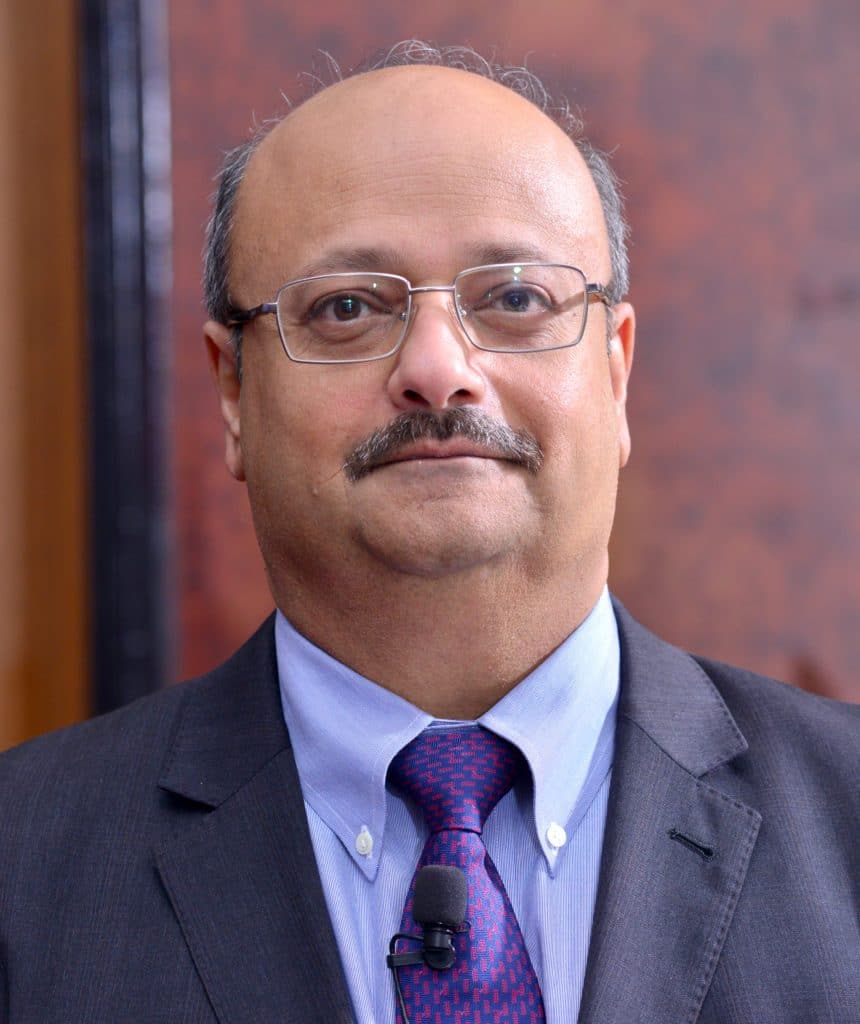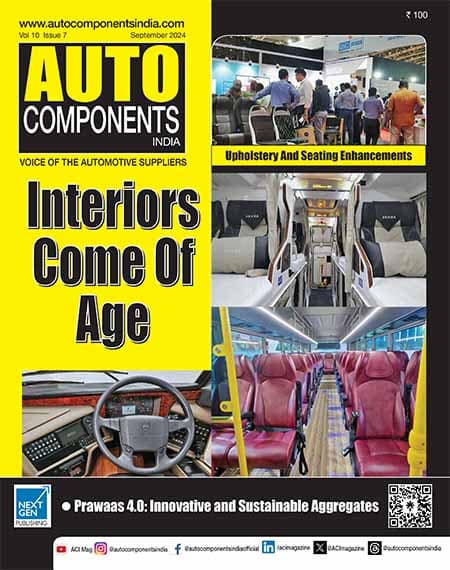In conversation with Aroop Zutshi, Global President & Managing Partner, Frost & Sullivan
Interview by Deepti Thore
Q. In the previous edition of GIL India Summit, the focus was on growth drivers amidst disruptive trends. Does the 2019 edition hint at sustenance for growth?
A. Yes certainly! The reason why there is a difference between what we spoke last time and what we are speaking now can be blamed on the one big change that has happened over the last 12-18 months and that is the pace of change. Because of the change and disruption happening so rapidly, many of our clients, be it corporates or banks, investment agencies or for that matter even the governments, they are all trying to find ways to cope up with the rapid changing environment. How to prepare for future that looks very disruptive, and very chaotic? So that means you need to have a better processes in place, you have to better understand components that are driving this change to, in turn, understand and prepare based on those changes. So this edition of GIL India Summit is very different from that perspective. As Frost & Sullivan, our goal is to help our client base in India and across the world in understanding these changes and then helping prepare them, to build the models to succeed, survive and thrive in the long term.
Q. Elaborate on the need to revolutionise customer engagement, the workforce, and business models on the whole?
A. Because of the set of changes discussed above for most companies, today the customer segments are also undergoing a change. One thing is very clear, there are social trends that are becoming very prevalent and playing a big role in how you are going to deliver value to the customers. So what that means is that you have to build new models of engagement, you have to build mass customisation, and you are dealing with a group of customers who are very digitally enabled. They need something with instant gratification. That means they need it now. So how will you build that model to deliver that service or the solution to them in the shortest period of time. And the best example I can give you is the food delivery market in this country. I think it is going through a great revolution. We are going to see huge growth opportunities in this market. What you see is how the food gets delivered from one part of the city to the other part of the city. This is done through a platform. What you can see in the future is to deliver this mass customisation, mass movement of goods and services with the delivery platform playing a very important role. By doing this you will be able to give customers the experience that they need, they want or deserve and that will differentiate the customers who work with you and with someone else.
Q. Do you agree that it is a synchronised slowdown after a synchronised upswing with a more pronounced impact in emerging economies like India?
A. I am not sure if I completely agree with the word ‘synchronised’. Obviously, my belief is that we operate in a globalised eco-system or in a global economy even though the last 12-36 months we have got different leaders in different parts of the world. Especially in the US and European countries, they are more in favour of localisation, more inward-focused rather than outward focused. But the reality is we do live in a global ecosystem. For any economy to survive, you have to not only sell within your market but you also have to cater to customers or markets outside your country. This means when you are living in a global ecosystem and one part of the world slows down, the other part of the world also gets affected. So the impact in China reverberates to the entire world. Likewise, when you have Brexit, its impact is not just limited to Europe but it can be seen everywhere in the world.
Now one thing we can clearly see given the chaos, the confusion with the changes that are happening, there is a clear indication of heading towards an economic slowdown. We do see a lot of hindrances making the coming 12 months very important. From Brexit to the impact of Hongkong unrest to the US-China trade wars. I don’t think so there will a synchronised slow down because of globalisation. I think this chaos will be quite short-lived.
Q. Is a revival insight in the near to medium term?
A. I am not sure about the near term but I certainly say medium-term for sure. In my definition, the medium-term would be eight to-12 months or 16 months at the best. I think the big reason will be the elections in the US. It gets done by November 2020 after which I believe there will be a bit more clarity and bit more stability in terms of the future shaping up. So I believe this is a 12-month slowdown after which the markets will understand how to operate with the new government in place.
Q. Tradewars and softening economic activity continue to be buzzwords?
A. Yes absolutely. No doubts. This trade war started almost two and a half years ago and that continues even till today. In fact, there are times when you feel that things are going down but the intensity increases rapidly. This has added to the complexity of political issues which makes it even more difficult to operate in this chaos. I think trade wars are happening and we will see more of it, especially between the US and China till we get to a certain level of equilibrium. That scenario is about 12 months away. After that, there will be a lot more stability and a lot more adjustment in this new world in which we all will be living together.
Q. At this stage of conflict between the US and China, how optimistic are you about India turning a global manufacturing hub?
A. Talking about the slowdown in China, and does it mean a big benefit for India, does it mean that factories will relocate from China to India, and therefore India’s manufacturing sector will get the required boost and become bigger or larger. I don’t think the drop in China is a big gain for India. Because it is not just about infrastructure, it is about the ecosystem. Developing ecosystem takes a lot of time, energy and commitment and I think that we will not see that happening in India in the short term. India has been talking about manufacturing for a long time, but I do not see a direct transfer of losses in China as a gain for India. I do feel manufacturing is a very important sector but what is further complicating manufacturing are some of the big trends that are changing some of the big industries in the country. For example, the automotive industry because of the trend in electrification is going to experience a big change. We are going to see more and more electric cars, therefore, we will see less of the components. That will disrupt the entire automotive and OEM part manufacturing ecosystem. So with that backdrop and with the inability to create that ecosystem in the short term, I don’t see the manufacturing ecosystem in India will see massive growth in the short to medium term. In the medium to long term, it will happen and it won’t be limited to the auto sector. Electronics is another area of big growth in my opinion. We are all moving towards a connected world. Autonomous cars, factories, and workplaces will all be connected. That means we will need more and more electronic devices in the future, therefore, electronic manufacturing will be a big part of our ecosystem. India needs to focus on it.
Q. Your take on the claims of broken supply chain and siloed trade sectors?
A. Obviously, with this change disruption, we are seeing a compression of the supply chain. The reason why we are seeing this compression is because of digital technology. For instance, in the logistics industry, you will see a variety of different components. To move goods from point A to point B you need many many such components to fall in place. What companies especially the startups have now realized is that it can be done in ways that are cheaper, better and faster. To elaborate, what that means is you no longer need to work with one company that can take your goods from point A to point B. It can be done with a variety of companies within that whole system. In the case of the logistics industry or for that matter in any supply chain its death by a thousand cuts. So we are going to see that change happening. It will lead to better optimisation, and last-mile delivery will be very crucial driven by social trends as discussed. So supply chain is primed for disruption in practically every industry including the manufacturing industry.
Q. What do you expect from the Indian OEMs and the entire supply chain as they enter the crucial stage of BSVI rollout?
A. I will say collaboration. All OEMs worldwide use the supply chain, so working with the supply chain, managing that whole process is very crucial. It has to be done in a collaborative way. It has to be done in a way such that it is a win-win for both the OEM as well as people within the supply chain. So understanding how to scale up, how to transform it to Euro6 level will be very important. We’ve seen that in Europe and we’ve seen that in India when we moved from level three to level four. Of course, level six makes it a bit more challenging but given that the supply chain is a very well established, with collaborative efforts the uncertainty and potential pain and potential chaos will be eased.
Q. What about synchronising supply to demand for the BSVI transition?
A. There’s a short window in which BSIV will be sold and then immediately at the end of quarter one we will move to BSVI. So managing the transition will be a key here. It’s a massive challenge. How do you predict demand in this short period of time to make sure that value is delivered to the end customer, especially the large fleet owners? I expect most OEM companies will actually plan towards keeping an inventory level at a slightly lower level than the demand. The idea is that everything that is produced is consumed by the market allowing for a quick transition to the next regulation. So I think big fleet companies will be given a higher priority given their bigger volumes. Bigger fleet operators also have a higher negotiating capacity compared to the smaller entities. From an OE production perspective, the earlier these fleet operators provide their purchase plans to the OEM, it will help the latter to gauge the demand. Given our mature supply chain, they can quickly turn around to align production levels to the spike in demand. If that doesn’t happen we will see OEMs produce slightly less than the actual market demand.
Q. A word on the component manufacturers claiming to have braved zero growth patches in the recent turmoil?
A. The challenges for component manufacturers will continue not just because we are moving from BSIV to BSVI but also due to some of the other big drivers. For instance, electrification will lead to a significant drop in the number of components and obviously what that does is for a lot of OEMS there is simply no future unless they do something else to stay relevant. Within the automotive industry we don’t expect any major opportunity for those kinds of companies so yes I think we’re going to see a lot of challenges coming forth and that’s one of the reasons why many governments both at the centre and the state have come up with their own policies towards electrification. It to ensure that these quantum component manufacturers are protected. They are a big part of the economic ecosystem and they’re trying to make sure that these players continue to survive and thrive. Yes, in the short term, I expect significant impact. I expect slow down I also expect demise of some of those companies and some will have negative growth until they work to scale down their business and change as per the megatrends.
Q. Given that companies are looking at sustainable practices for survival, any global trends that the industry could bank on to hedge against the degrowth?
A. I think service models are going to be the future. Platform and IOT models will be the future. Especially in the short term. They could collaborate with other companies. I think going digital will be very important because that’s the future in how you deliver everything to customers. If they look at their business from the perspective of incorporating those elements they will see success. Then there is a need to look at new business models. For example data will become ubiquitous that means we will be collecting a lot more data in every part of our business. This data needs to be converted into meaningful actionable outputs. With AI it’s becoming even more easy now to get these things done.














